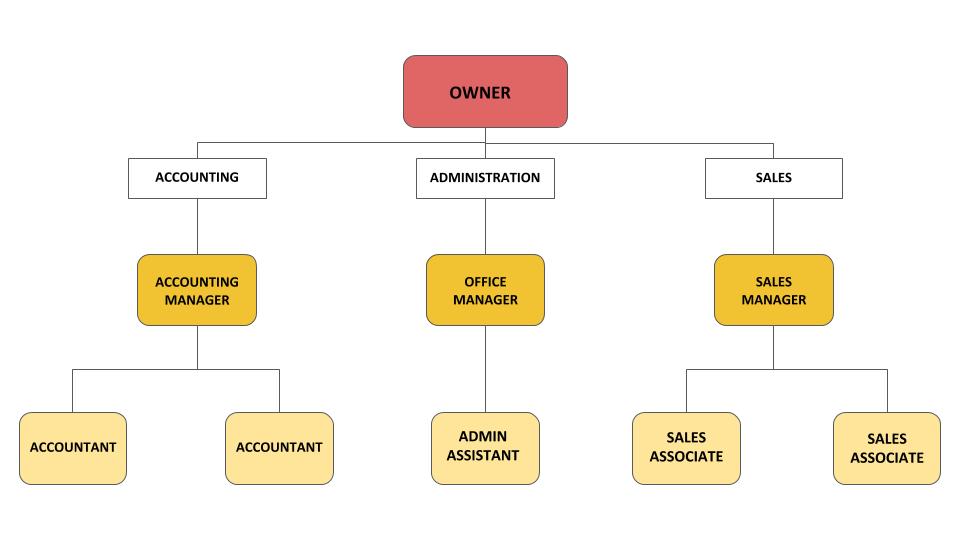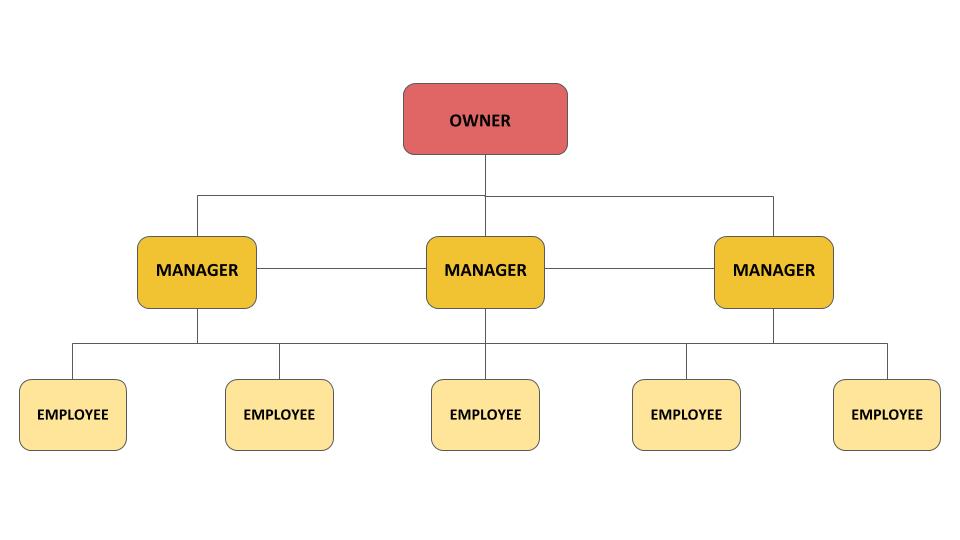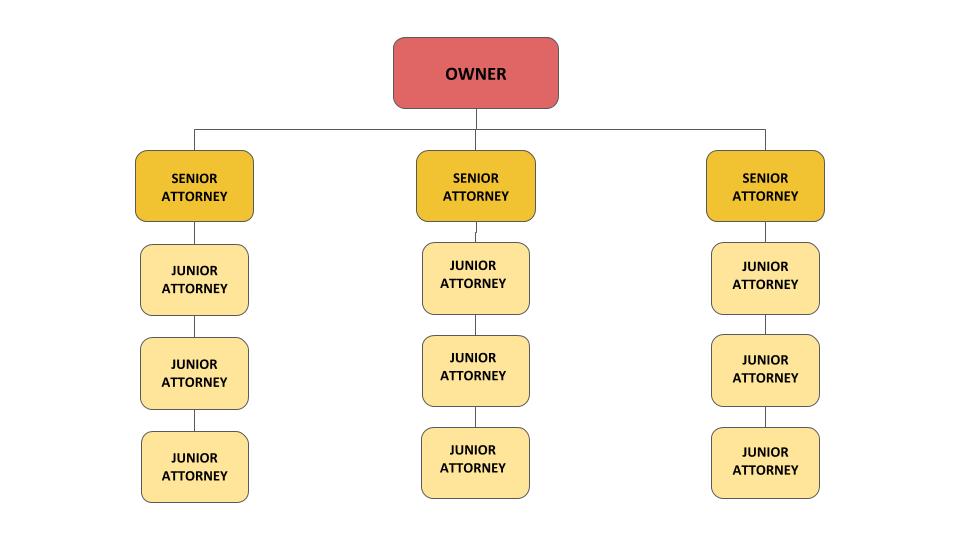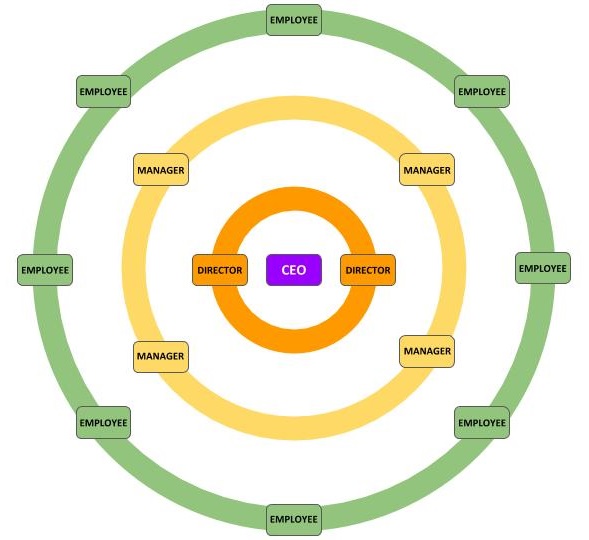
6 Types of Organisational Charts for SMEs
Are You Hiring?
Find candidates in 72 Hours with 5+ million talents in Maukerja Malaysia & Ricebowl using Instant Job Ads.
HIRE NOW
A small and medium enterprise (SME) organisational chart is a visual representation of your business structure. It describes employee roles and shows who employees report to inside the organisation.
Does your SME Need an Organisational Chart?
There are a few reasons why an organisational chart may be necessary for your company:
- A chart can clearly define your management structure, which is handy in a complex business.
- It helps in increasing your operation's efficiency.
- It displays the current success
- A chart can facilitate planning for the future
- It allows for at-a-glance engagement with the right personnel.
Types of organisational charts
Line organisation structure

This structure is also known as the hierarchical organisational chart or a top-down organisational chart. It's one of the most popular structure because of its simplicity.
The top of the chart shows the executives, then directors (for larger businesses) and department heads, and finally the employees each department head is responsible for.
The hierarchy is simple and rigid. Information flows through each layer of the company in turn, and the structure disallows collaboration between teams.
For SMEs with few workers, this structure is the least complicated. The owner is at the top, shift or department managers in the middle, and other employees at the bottom.
Functional organisation structure

This is identical to line organisational structure but offers more lines of communication. It lets directors and managers work together over teams they do not directly control, for better information flow and flexibility.
In an SME, you're likely to have different teams with a lot of interaction; the sales department may have daily interaction with administration and with shipping. This structure establishes a hierarchy in every department while allowing for cross-communication.
Line and staff organisation structure
.jpg)
This structure is perfect for companies working in specialist fields. The staff in this situation refers to experts advisors providing:
- technical information, opinions, and advice,
- who may be allowed to authorise activities; and
- help with reports that have weight in decision-making.
Staff and line positions have different objectives and are often ad odds. Conflicting expectations can be confusing for bottom-tier employees and result in lower productivity.
Project-based structure

If your company operates with projects that are different from one client to the other, and from one brief to the next, this is the best structure for you.
The chart changes as needed for each project. Though it's helpful to be able to mix and match employees based on project needs, it does mean teams will need to adapt to new managers and colleagues for every assignment. Managers will need to be able to handle several functions across multiple departments.
The director is at the top, appointing project manager for each project. The project manager will choose a team of people to work on the project based on their expertise. When the project is finished, managers and team members are assigned to other projects.
In SMEs, projects may be internal, for instance, marketing campaigns or charity events. Project charts can help track teams for each initiative.
Matrix structure

The matrix structure combines several types of organisational structures to create a customised solution to meet particular needs. It is characterised by more than one chain of command, with project team members reporting to two or more managers.
This is perfect for businesses that are project-based, where teams must also follow a functional structure.
Team leaders are assigned a representative from every functional area that applies to the project. The functional team member reports to the project manager and the functional manager of that area.
The functional manager supervises the employees and activities to make sure they are in line with company standards and policies, while the team leader ensures the project is finished as planned.
Conflicts and confusion tend to happen when reporting to more than one boss.
Circular structure

A circular structure still relies on hierarchy. Higher-level staff occupy the inner rings of the circle and lower-level workers occupy the outer rings. The executives aren't at the top, but on the inside to allow ideas to spread outward.
The structure aims to promote open communication and the free flow of information between all parts of the organisation.
This structure is often confusing because it can be hard for employees to find out where they fit within the company and who they are supposed to report to.
But, in a business where communication is encouraged on all levels, this allows employees to seek advice from any available supervisor, as opposed to a rigid chain of communications.
If you want your SME's organisation chart to serve its purpose and support your business, you must be able to update your chart as needed and effectively share each version of the chart with your entire team.
It's a good idea for SME owners to operate with two versions of their chart; one forward-facing for all employees to see, and one behind the scenes to plan for future growth and open positions.
Source: Broadly
Having Problems Hiring? Our recruitment experts are at your service at AJobThing.com. We provide free consultation!
Related articles:
HR Guide: How to Effectively Review Resumes
HR Guide: How to Manage Job Applications
HR Guide: Managing Employee Sick Leaves

